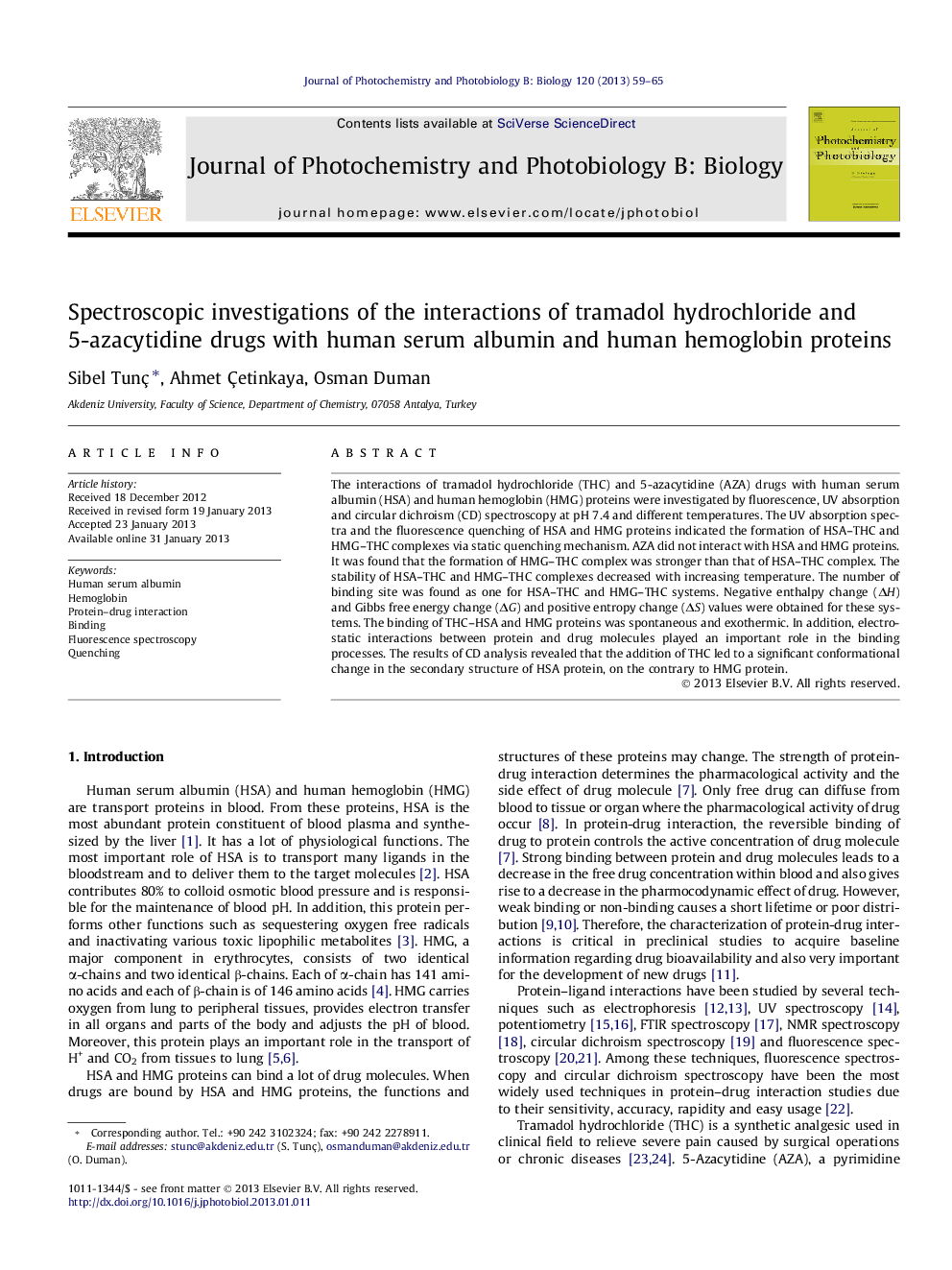| Article ID | Journal | Published Year | Pages | File Type |
|---|---|---|---|---|
| 30629 | Journal of Photochemistry and Photobiology B: Biology | 2013 | 7 Pages |
The interactions of tramadol hydrochloride (THC) and 5-azacytidine (AZA) drugs with human serum albumin (HSA) and human hemoglobin (HMG) proteins were investigated by fluorescence, UV absorption and circular dichroism (CD) spectroscopy at pH 7.4 and different temperatures. The UV absorption spectra and the fluorescence quenching of HSA and HMG proteins indicated the formation of HSA–THC and HMG–THC complexes via static quenching mechanism. AZA did not interact with HSA and HMG proteins. It was found that the formation of HMG–THC complex was stronger than that of HSA–THC complex. The stability of HSA–THC and HMG–THC complexes decreased with increasing temperature. The number of binding site was found as one for HSA–THC and HMG–THC systems. Negative enthalpy change (ΔH) and Gibbs free energy change (ΔG) and positive entropy change (ΔS) values were obtained for these systems. The binding of THC–HSA and HMG proteins was spontaneous and exothermic. In addition, electrostatic interactions between protein and drug molecules played an important role in the binding processes. The results of CD analysis revealed that the addition of THC led to a significant conformational change in the secondary structure of HSA protein, on the contrary to HMG protein.
► THC quenched the fluorescence spectra of HSA and HMG by a static quenching mechanism. ► Binding constants and thermodynamic parameters were calculated. ► The affinity of HMG for THC was higher than HSA. ► Electrostatic interactions were important in HSA–THC and HMG–THC complexes. ► The binding of THC changed the α-helix amounts of HSA and HMG proteins.
